Day: March 1, 2023
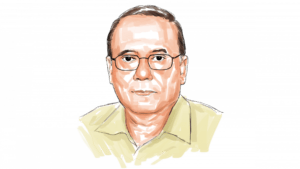
Architect Mubasshar Hossain An Eternal Soul Flown Through Eternity
Human life is a shirt journey Every human is born with a purpose that differs from man to man. Some of us can fulfill all the purposes. We might spend an ordinary life with the only aim to earn daily bread and butter, save money and lead a secure life. However, there are others who dedicate their entire life to the betterment of society, country, and the world. Their great deeds have no political or religious boundaries. The grandiose of their presence remains a feeling of reliance for all.
Read More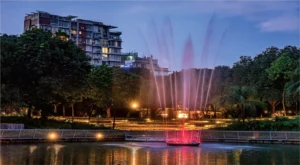
A story of Rewards as lateral Awards
Architecture is a practice, a profession. Is it only that? To many, it might be, but to a few, it is a form of emotion or a meaningful impact on public realm as well. Architecture is not only all of the above, but beyond. The arena is not just there to make boxes to accommodate functions. It needs involvement of humans, life, psychology, sociology, economy, and every other vital aspect to shape a living standard. From micro to macro, from master planning to interior designing, the field is vast to explore. Architects need to be sensitive and sensible enough to practice these opportunities of responsibilities. VITTI Sthapati Brindo Ltd., co-founded by architects Iqbal Habib and Ishtiaque Zahir Titas, is one of the few firms in Bangladesh that focuses on all these aspects. In the past 32 years, Vitti has accomplished master planning, building designs, and interior designs for both public and private realms. The story cannot be shared in short. For them, the project experience speaks more intensely than words. The architectural projects of Bangladesh are pinning their existence on the global map, earning a lot of recognition and awards. Vitti as a firm has also received many prestigious ones, but to them, these accolades add value to the projects and compel Vitti to act more responsibly. Their main source of success is the lateral returns they receive from projects started for the benefit of common people. Their success is determined by the impact of their designs on the lives of Dhaka dwellers. Again one such initiative that has had a significant impact on bridging the gap between Dhaka’s eastern and western neighborhoods is HatirJheel. Since most of Dhaka is densely built up, the journey along the lakeside is a splash of fresh air. But it wasn’t an easy journey to create this dream project. “We opposed the initial house planning for four and a half years, as well as the commercial expansion of Kawran Bazar in the Hatirjheel neighborhood. I noticed a model of the planned housing was in the RAJUK chairman’s room. In a conversation, he excitedly shared how the housing plan advanced to landfill the waterbody. High land price was their excuse,” shared Ar. Iqbal Habib. With the help of respected specialists in the environmental and other sectors, they launched a protest that helped to create the experience we live in today. It was more than simply a project; it was a vision and a dream. People in Dhaka never imagined that it would be possible to go from Gulshan-1 to Tejgaon by waterbus. The smiley face of the waterbus user is rewarded for the architects. The stories are always greater than the projects. Large-scale initiatives by Vitti are illustrations of how perseverance can bring big dreams. This serves as motivation for individuals and aspiring architects. Dhaka’s parks and playgrounds have recently been refurbished, giving the city some much-needed green space. Twenty-seven parks, mostly in the northern part, were designed by Vitti. But what we see is the result: stories that were not designed on pen and paper. The permission to revitalize these parks was also an achievement after a social movement. How were the parks designed? Ar. Ishtiaque’s response to this query was, “The development of these parks was designed by users, children, who have the primary rights to the space. We provided them with Minecraft, and they designed their parks. We ensured those children, female children, the elderly, and especially abled people had facilities and access to parks. We wanted people to be inspired by the space that they designed, that we enhanced, and that we built.” The project was executed with a focus on collaboration and inclusively, which has resulted in park and playground that truly serve the community. This project involved active participation from the user group and young children who were given the opportunity to express their desire for the space through a participatory questionnaire survey. Hence the designs are an example of successful co-creation as a process, it create a sense of ownership and pride among the community. However, the success of the project can be attributed to the careful co-management of all stakeholders involved, including professionals and the community. People’s contributions influence the nation’s daily growth. And these tales are examples of growth through adversity and success. Architecture in Bangladesh should be for and at times created by the general populace. At this juncture, the nation requires user-centric design, particularly in public domains. “Vitti—The Atelier” was established in 1991 under the direct supervision of subcontinental Master Architect Muzharul Islam. In 1993, three youthful architects, Ishtiaque Zahir, Ehsan Khan, and Iqbal Habib, founded “Vitti Sthapati Brindo Ltd.” from the “Atelier.” Currently, there are ninety members on the team, including architects, CAD specialists, engineers, administrative employees, and support personnel. “As fresh graduates in a very challenging time of transition period of democracy in the country, our spirit was at the top level. The thirst for working hard and serving the society was there within. We believed architecture is a practice that needs guidance from a leader, hence walking in the ideology of the Master Architect Muzharul Islam, who believed every aspect of human life and the nation as a whole is included in the framework of architecture. Vitti’s motto has always been to create an umbrella under which diversified projects are practiced and ideas are groomed. We try to grow as a group rather than as an individual entity,” concluded Ar. Ishtiaque Zahir Titas.
Read More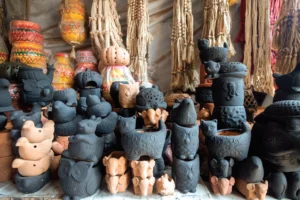
Mrith Shilpo The Art and the Artists
A blurred memory of seeing clay art somewhere on the Dhaka University campus, and visiting places of art, exhibitions, and festivals – are all part of socio-cultural development during our childhood. These products are home decors, visually soothing and adds a warmth in the ambiance. An urban woman would plant trees in clay pots and vases. Sometimes she would use clay tableware to serve food. Growing up, clay came into our life in many ways. Apart from the aesthetics of a clay art piece, the artifacts feel grainy when touched and can be turned into mush and moulded into something new. A younger version of us would want to break them and glue them back together with wet clay. So, finally visiting the shops on DU campus brought back the childhood memories. It took Ceramic Bangladesh authors two visits to learn the insides of the trade at Doyel Chottor Mrith Shilpo (Pottery) shops. We met three of the oldest shop owners there, and through conversation, they shared their experience – the goods and the bads. Abul Kashem was one, a 72-year-old man, who has been in the Mrith Shilpo business for 36 years. The oldest there, the artist designs the products and sometimes moulds the clay as well. His teenage years started with a job in a fishing trawler, and living on the water with all its waves and splashes. What scared him during his voyages on the boat were pirates. He left the job after experiencing one attack and came to Dhaka to look for work. Mr Kashem came across merchants from the Paal community in a festival in Shishu Academy where he was running his tea stall. The merchants came from Savar’s Nobinagar area and sold some of their products to Mr. Kashem or Kashem chacha as an old man is called in this part of the world. “I got the products at a low price from them, because I bought all their leftovers,” he recalled. He sold his f irst lot in the book fair. Kashem chacha now buys the products from Cumilla, Shariatpur, Gazipur, and Tangail. He said the Covid-19 pandemic took a big toll on his business, now it’s better, however. He makes Taka 15,000 a month by selling these products and his family lives a tight life. But he is still happy doing what he loves to do. “All in all the business is not that bad, I mean, we are surviving here. I truck in my products from different parts of the country: Ektara from Kushtia, Lamps from Khulna, Potteries from Cumilla and so on. The Metro Rail Authority supports us now and has given us cards to claim a shop when the paperwork is done.” Digging Deeper The biggest threat to the shop owners here, was that there is no permanent paperwork for them that could potentially protect their shops. The shops are legally said to be temporary and the Metro rail project has decreased the customer count and the buzz in the shops has come down. However, promises from a member of parliament has given them some hope. It was, however, relieving to hear that the students of the university, Charukola, VC of the University are the people behind the success of these stores. “They inspire us,” one of them said. Mohammed Baharuddin, 52 years of age, who runs Siyam Mrith Shilpo and Handicrafts, said he came to Dhaka from Noakhali when he was 12 and now has three children. The family survives on what he earns and they are doing well. “I have been in this business for 30 years. I met the potters from the paal community in a festival,” said Mr. Baharuddin. The teachers and faculties of DU know about the hardships of this business and also value what these shop owners do here. So, he said, 29 of them got together to write a letter to the ministry, pending a reply. “I fear that even though the chances are there, someday someone will come and uproot us from here.”- Mr. Baharuddin said. Mohammed Saiful Islam, 53, owner of Doyel Mrith Shilpo, said “I was born in Rajshahi, in Zafapur, and before coming into this business I sold vegetables. The 1988 flood took away everything from me, so I moved to Dhaka and thought about joining the pottery business. My brother-in-law was in this business from before, and he gave me one of his two shops, and that’s how I got started.” Mr Saiful’s son studies in Dhaka University, and this business has made it possible for him to educate his children. His daughter is also married into a loving home, and currently they live with his mother and wife in a small but warm apartment in the city.
Read More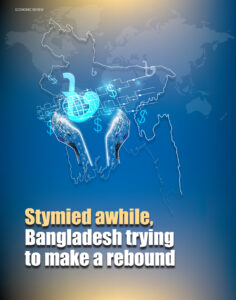
Stymied awhile, Bangladesh trying to make a rebound
Bangladesh, one of the fastest-growing economies globally, had outperformed its South Asian peers and many developed economies until the outbreak of the Covid pandemic in 2020. It has been trying to be back on track after a downturn. Overcoming difficulties, Bangladesh has been able to perform better on some fronts. Needless to say, its macro-economy is standing on a strong footing and relatively stronger. In such a context, finance minister AHM Mustafa Kamal has recently hailed the International Monetary Fund’s (IMF’s) decision to approve a $4.7-billion loan programme to help protect foreign exchange reserves. Bangladesh has to import consumables such as food grains, sugar, edible oil, spices, and raw materials for ceramic industry and other manufacturing sectors, petroleum products, fertilizer, cotton, yarn, chemicals, machineries etc. But prices of essential commodities shot up along with disruptions to the supply chain following the Russian invasion of Ukraine since 24 February 2022. Against this backdrop, trade experts and sector insiders blame the country’s overreliance on imports for its recent f inancial crisis. Poor or no production of raw materials and goods locally is also putting a strain on its foreign exchange reserves. The country’s current account deficit had further widened in October 2022 as imports continued to surge compared to the combined receipts from exports and remittances, analysts said, adding that the main reason behind this surge is the yawning trade gap. According to the central bank data, the current account climbed to $4.5 billion in deficit as of the end of October last year against a deficit of $3.83 billion in 2021. As stated by bankers a few months ago, the pressure on foreign exchange is still there because of the payment obligations against the letters of credit (L/Cs). The global market is currently seeing an unusual movement in the prices of various commodities due to the prolonged Russia-Ukraine war. From fuel to daily essentials, industrial raw materials and machinery, Bangladesh has experienced hyper inflation in its internal market. Figuratively speaking, the fuel price hike is truly fuelling the inflationary pressure. Things have got this bad as the prices of natural gas and electricity along with daily commodities hiked further after the IMF had attached strings with its $4.7-billion loan package. However, businesses believe that the IFM loan will give some relief to the economy, but economic anatomists, experts and businesses warn that the country’s problems will not be solved so easily due to pressure on balance of payments (BoP). Bangladesh has seen sizable growth in exports unlike that in remittance flow but it has seen a major shortage in the supply of foreign currency, especially US dollar, because of the abnormally high growth in imports. There are six sources of foreign exchange earnings for Bangladesh: Exports, Remittance, Foreign Direct Investment, Tourism, Investment income abroad and Foreign loans or grants. But none of the first four are strong, rather in declining mode. Despite huge money laundering abroad, the central bank is yet to open the door for investment there. In this situation, Bangladesh is becoming more dependent on foreign loans for mega development projects. But there are not enough sources of foreign exchange earnings to pay off import bills and foreign debt. Apparently falling into the middle income trap, this crisis may become dire and the exchange rate may have to fall frequently to manage the crisis. As a result, inflation may become more f lagrant. Potential, Yet Troubled Ceramic Industry With increased urbanization and infrastructural development over the years, the ceramic industry is recognised as fast-growing as demand for ceramic products continues to mount. Overcoming many obstacles, more than 70 ceramic (tableware, tiles and sanitaryware) units have been set up in the country for exports and imports substitution with a local and foreign investment of Tk 150 billion. However, an erratic rise in gas prices has become a major problem in this gas-dependent industry. The ceramic sector is a highly potential labour-intensive industry. Since machinery, technology and raw materials (most of which are natural minerals) are not available in the country, the local industry has to compete in both domestic and international markets with the countries, which are rich in raw materials and technology, in selling imported products. As the competing countries have their own machinery, technology and raw materials, they enjoy comparative advantage. It is thus necessary for the home-grown traders to stay buoyant locally and globally by reducing additional expenses. The average cost of production of ceramic products has increased between Tk 5.0 and Tk 7.0 per kilogram. Recently, the government increased the price of natural gas by an average of 150 per cent, and the production of such products has increased by Tk 7.0 to Tk 10 per kilogram for increased gas prices. Balance of Payment Financial experts say macroeconomic shock was not only due only to the war. In fact, the fiscal year 2021-22 witnessed abnormal growth in imports, triggering the highest trade deficit in the country’s history. The balance of payments (BoP) has remained negative in the first half of the current fiscal year, depicting a plethora of challenges Bangladesh is facing in protecting its foreign-currency reserves from depletion as fund outflows exceed inflows. Inflation Experts believe real inflation may be higher than the estimated one, maybe in a range of 12-14 per cent. However, the Bangladesh Bureau of Statistics (BBS) revealed that inflation was estimated at 8.57 per cent in January 2023 while it was 8.71 per cent in December 2022. Inflation will not go down if the dearth of dollars stays. What Bangladesh needs to do is provide the market with adequate supply, otherwise price hikes will continue. Remittance The finance ministry very recently raised the incentive on the remittance exchange rate to 2.5 per cent from the previous 2.0 per cent as money transfers from remitters abroad saw a 21-per cent year-on-year fall in the July-November period. To stop illegal hundi transactions, the government first increased the cash incentive to 2.0 per cent, then to 2.5 per cent. But transactions through hundi
Read More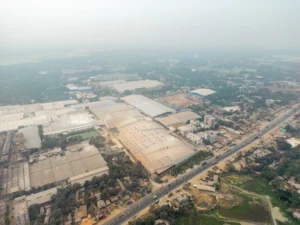
RAK LIKES BEING ITS OWN RIVAL
The ceramics industry in Bangladesh has a huge potential in terms of sustained infrastructural development the country has witnessed over the years. The construction sector has boomed, thanks to growing property development, housing, rehousing, gentrification and urban renewal. Building industry involves so many materials for exterior and interior décor and furnishings. Ceramic is an essential component of interior ornamentation to give a structure, be it a modern house, hotel, motel, cottage or a corporate office, both elegant look and taste.
Read More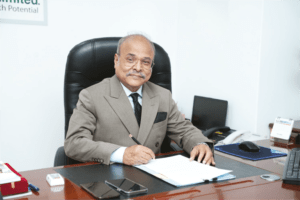
Enhanced engagement between Banks and Ceramic Manufacturers essential : NBL DMD
National Bank Limited (NBL) Deputy Managing Director Hossain Akhtar Chowdhury tells with Ceramic Bangladesh an exclusive interview that the ceramic sector needs a huge investment in the future.
Read More
Poems and Pottery
For ceramics, you only get one chance to impress a viewer. The first impression, which is notoriously, the last, has to be a solid ¨I like the design¨ or else no matter how the shape or the glazing is, the same person will not give a second look at it. This is where designers come in. The designer envisions shapes and colours and creates enthralling pieces of ceramic ware. S/he not only comes up with the idea of the product, but also decides on the technical aspects that work behind every output.
Read More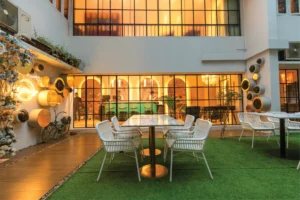
O’Play A playful combination of colours and spaces
Imagine being able to spend a peaceful evening with your loved ones in the middle of Dhaka’s hectic city life, where indoor and outdoor areas flow together to form a kid-friendly environment. And now, in O’play, it’s all come to life.
Read More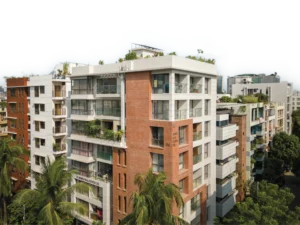
Designing Dreams with Precision
Momen Real Estates Ltd. has been in the real estate market for a while building a successful national company. The company’s founders have been actively involved in property development since 1987. After completing a few projects with business partners, they founded their own private business house, MRS Properties Ltd., as a family-owned private company in 1995. In 2001, the business was renamed as Momen Real Estates Ltd.
Read More
In the Vicinity of Khan Jahan Ali’s Alligators
What does birth inside your psyche when you hear the word mazaar? For many, it might be that gush of inexplicable zany feeling that stems from your experiences related to a mazaar, which is, in other words, a shrine. Common symbolisation of the religious or spiritual sites in the sub-continent especially in Bangladesh, mazaars is indeed an eccentric space. Spaces, which are onerous to describe with words unless you have actually- not only experienced it, but internalised its truest weirdly ethereal essence, putting aside all your biases, particularly religious ones. And each one has its own set of personalities.
Read More
The City of Rejuvenating Souls Longest sandy beach, scenic beauty and roar of the sea make Cox’s Bazar a unique tourists’ destination
One can search for his/her soul by listening to the roar of the sea, as Jamie Lyn Beatty noted, “Jobs fill your pocket but adventures fill your soul.” To escape the monotonous, busy, and chaotic schedule of regular life, one can open and close the eyes taking shelter in a unique sea beach for refreshment of the soil. You can roam around the beach, soaking feet in the seawater and taking fun from beach activities and enjoy seafood and the sunset with friends and family. It’s the city of scenic beauty and peace, called Cox’s Bazar, where you can take a fresh breath of life.
Read More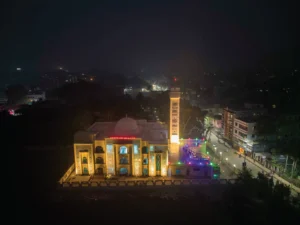
MODEL MOSQUES A Unique Gift to Society Message of peace, culture of harmony to be promoted in society
Mosque is not just a place of worship for Muslims; it’s the common most place of meeting and congregation of the followers of the religion of peace, Islam. It’s not only a holy place; it helps spread the message of love, friendship and brotherhood. Mosque is not merely a place that involves spirituality but also deals with worldly affairs; It’s more than that.
Read More
